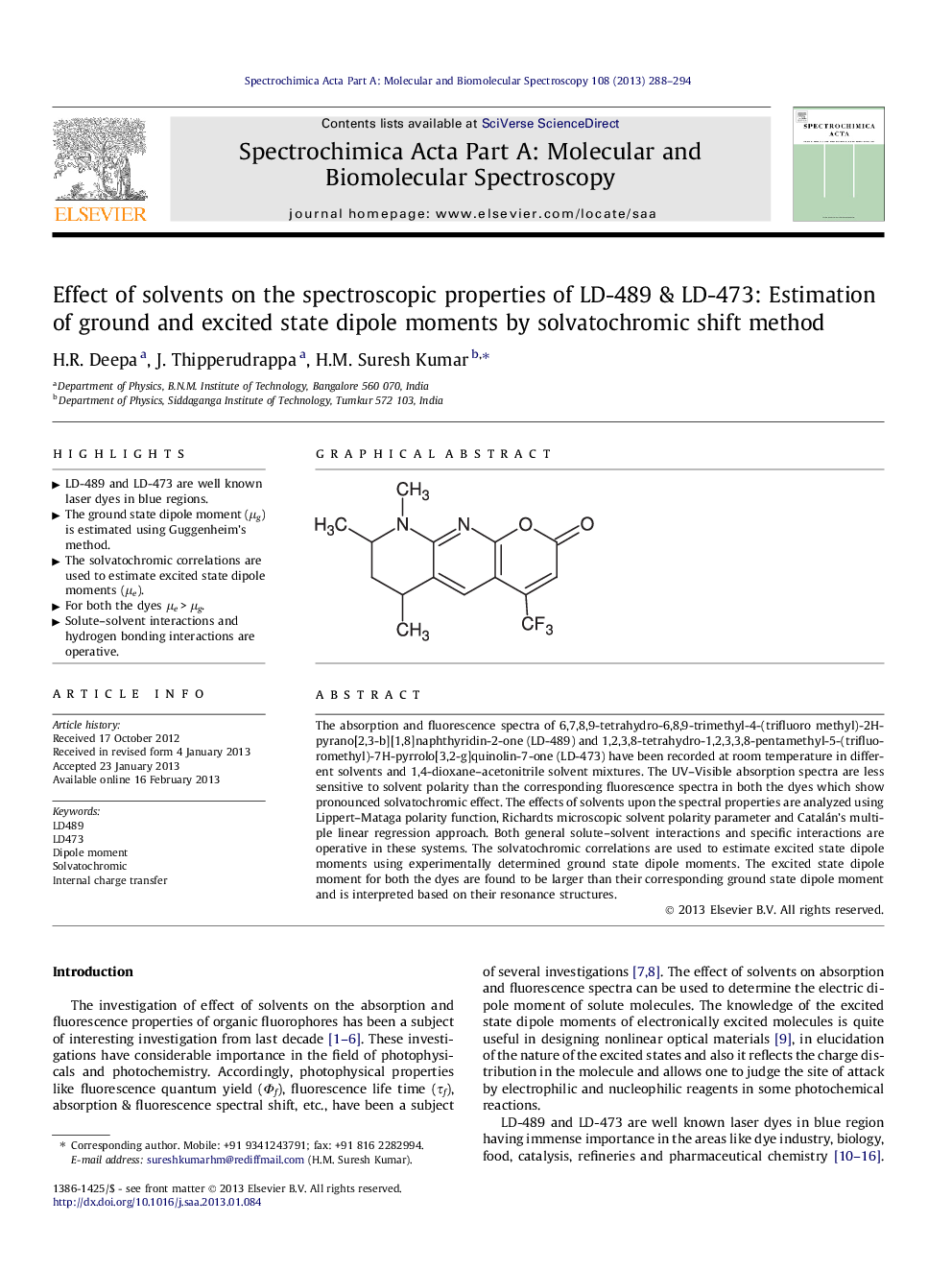| Article ID | Journal | Published Year | Pages | File Type |
|---|---|---|---|---|
| 1234781 | Spectrochimica Acta Part A: Molecular and Biomolecular Spectroscopy | 2013 | 7 Pages |
The absorption and fluorescence spectra of 6,7,8,9-tetrahydro-6,8,9-trimethyl-4-(trifluoro methyl)-2H-pyrano[2,3-b][1,8]naphthyridin-2-one (LD-489) and 1,2,3,8-tetrahydro-1,2,3,3,8-pentamethyl-5-(trifluoromethyl)-7H-pyrrolo[3,2-g]quinolin-7-one (LD-473) have been recorded at room temperature in different solvents and 1,4-dioxane–acetonitrile solvent mixtures. The UV–Visible absorption spectra are less sensitive to solvent polarity than the corresponding fluorescence spectra in both the dyes which show pronounced solvatochromic effect. The effects of solvents upon the spectral properties are analyzed using Lippert–Mataga polarity function, Richardts microscopic solvent polarity parameter and Catalán’s multiple linear regression approach. Both general solute–solvent interactions and specific interactions are operative in these systems. The solvatochromic correlations are used to estimate excited state dipole moments using experimentally determined ground state dipole moments. The excited state dipole moment for both the dyes are found to be larger than their corresponding ground state dipole moment and is interpreted based on their resonance structures.
Graphical abstractFigure optionsDownload full-size imageDownload as PowerPoint slideHighlights► LD-489 and LD-473 are well known laser dyes in blue regions. ► The ground state dipole moment (μg) is estimated using Guggenheim’s method. ► The solvatochromic correlations are used to estimate excited state dipole moments (μe). ► For both the dyes μe > μg. ► Solute–solvent interactions and hydrogen bonding interactions are operative.
